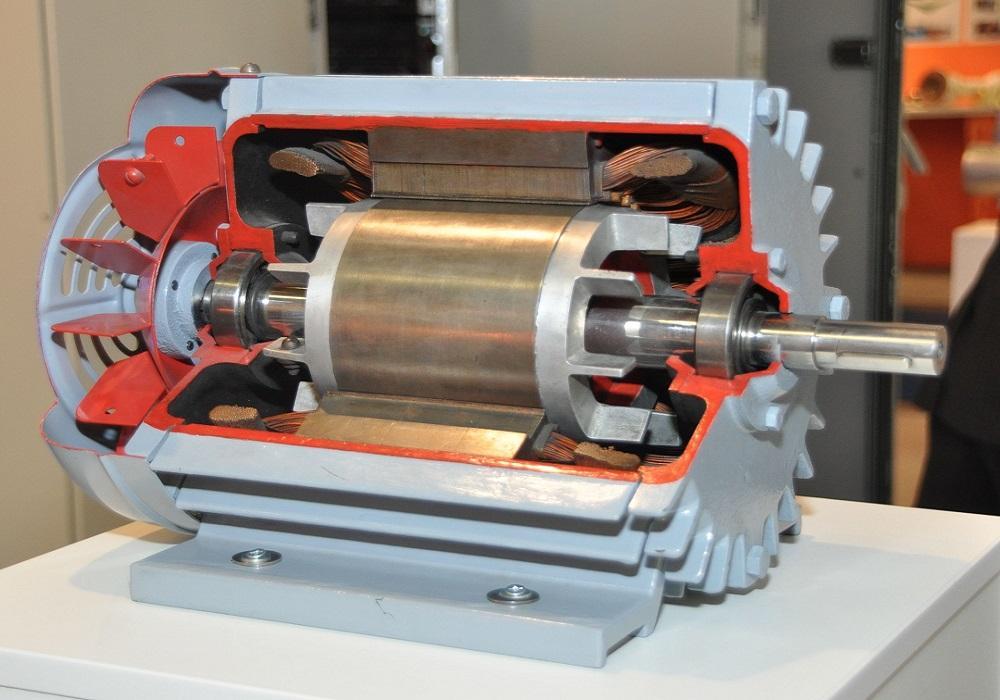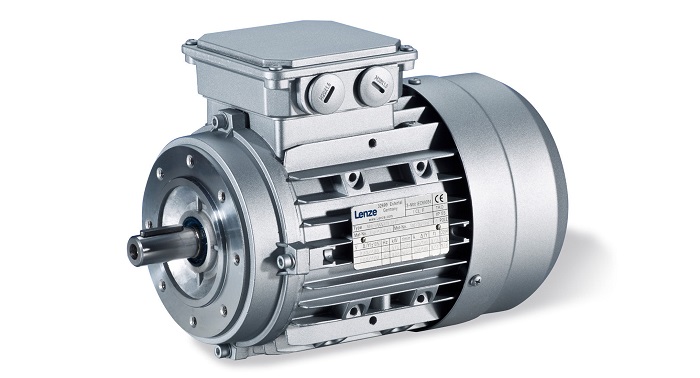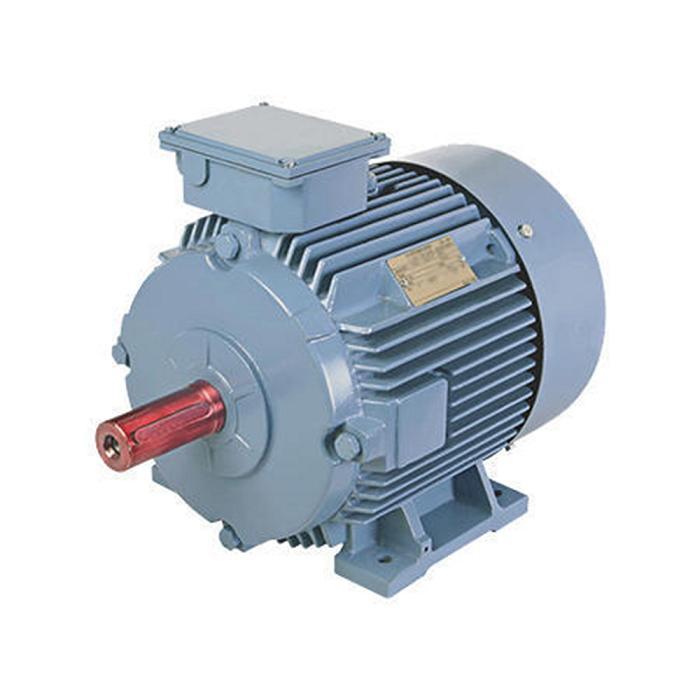An induction motor, known as an asynchronous motor, is the most commonly in-use AC electric motor. This is how an induction motor works: the alternating current in the rotor that is needed to produce torque is gained via electromagnetic induction. This electromagnetic induction results from the rotating magnetic field of the stator winding. But in this article, we are going to focus on the types of induction motors. Linquip has gathered the whole essential and helpful pieces of information for you to read and get more acquainted with induction motors and their working principles. In the following sections, we are going to get familiar with different induction motors to some acceptable extent. Stay with us.
Types of Induction Motors
There are mainly two types of induction motor. This classification is based on what power supply induction motors are fed with. Single-phase induction motors and three-phase induction motors are the two main types of induction motors. As their names imply, a single-phase induction motor is connected to a 1 phase AC power supply and a three-phase induction motor is provided with 3 phase AC power supply. Each of these two main types has some subcategories. the single-phase induction motor itself is categorized into 4 types and the three-phase induction motor has 2 types.
Types of Single-Phase Induction Motors
based on the construction and starting method, the single-phase induction motor is categorized into the four types of Split Phase, Capacitor Start, Capacitor Start Capacitor Run, and Shaded Pole. In the following sections, we will elaborate on each of these types of single-phase induction motors.
-
Split Phase Induction Motors
In addition to the main winding of the stator of a single-phase induction motor, there is another winding called auxiliary winding or starting winding. The auxiliary winding and a centrifugal switch are connected in series. The job of this switch is to cut off the auxiliary winding from the main circuit when the motor speed reaches the speed up to 75 – 80 percent of the synchronous speed. As you may know, the running winding is inductive but we need to create the phase difference between the two windings. This is possible if the starting winding bears high resistance. The starting and main current in split-phase induction motors get split from each other by some angle. So, this motor got its name as a split-phase induction motor.
This kind of motor has a low starting current and moderate starting torque. So, you can find these motors in fans, blowers, centrifugal pumps, washing machines, grinders, lathes, air conditioning fans, and more.
2&3. Capacitor Start and Capacitor Start Capacitor Run Induction Motors
The working principle and construction of these two types of induction motors are almost the same. You should keep it in mind that single-phase induction motors are not self-starting because the magnetic field produced is not of rotating type. Induction motors need phase difference to produce a rotating magnetic field. In the case of split-phase induction motors, there should be resistance for creating phase difference but in capacitor start and capacitor start capacitor run induction motors, the capacitor makes phase difference. There is a fact that the current moving through the capacitor leads the voltage. There are two winding in capacitor start and capacitor start capacitor run induction motors: the main winding and the starting winding. With starting winding, there will be a connection in the capacitor so the current flowing in the capacitor leads the applied voltage by some angle.
These two kinds of induction motors have high starting torque therefore they are used in conveyors, grinders, air conditioners, compressors, and more.
-
Shaded Pole Induction Motors
Looking at the stator of the shaded pole single phase induction motor you will see the salient or projected poles. These salient poles are shaded by the inductive copper ring. These poles are divided into two unequal halves. The smaller portion conducts the copper ring and is called the shaded portion of the pole.
As shaded pole motors possess low starting torques and because of their reasonable cost, these motors are mostly employed in small instruments such as hair dryers, toys, record players, small fans, electric clocks, and more.
In the following sections, you will get familiar with different types of induction motors of three-phase.
Read More on Linquip
- Single-Phase Induction Motor: All You Need to Know About It
- What Is Split Phase Induction Motors? 2021Ultimate Guide
- What Are Shaded Pole Induction Motors? 2021 Ultimate Guide
- The Good Guide to Types of Electric Motors
- Types of Wind Turbines: The Quick and Easy Intro
- Differences Between Motor and Engine
- Efficiency of Induction Motor
- What is Speed Control of Induction Motor?
- A Full Explanation on Types of Servo Motors
- All About DC Motor Types and Their Applications
- A Simple Guide to the Difference Between Motor and Generator
- The Only Guide You’ll Ever Need For The Working Principle of Induction Motor
Types of Three-Phase Induction Motors
Three-phase motors based on their rotor winding, are divided into two categories. These two categories are squirrel cage and slip ring.
-
Squirrel Cage Induction Motor
The rotor shape of this type is resembling the shape of the cage of a squirrel and it is the reason that this motor is known as a squirrel cage induction motor.
The construction of this type of rotor is very simple. The rotor has a cylindrical core which is laminated and also has some slots on the outer periphery. The slots are not similar and they are skewed at some angles. Having skewed slots helps to prevent magnetic locking between the stator and rotor teeth. These slots and their skewed shape results in smooth operation and make a reduction in the humming noise.
The squirrel cage motors have rotors of bars instead of the rotor winding. These bars are made up of aluminum, brass, or copper.
In this type of rotor, there is no slip ring or brushes. Hence, the construction of this type of motor is simpler and more robust.
Slip-ring or Wound Rotor Induction Motor
Slip-ring induction motors are known as wound rotor motors. The rotor consists of a cylindrical core that is laminated. Like squirrel cage motors, there are some slots on the outer periphery. The rotor winding is placed inside the slots.
the rotor winding in slip-ring induction motors is wounded in such a way that, the number of poles in rotor winding equals to the number of poles of the stator winding.
The reason why this type of induction motor is called slip-ring is that the end terminals of rotor windings are connected to the slip-rings. So, this motor is known as a slip-ring induction motor.
Conclusion
In this article, we tried to elaborate on the different types of induction motor. Firstly, we had a short definition of induction motors and discuss how they work. Next, we talked about single-phase induction motors and their types. And finally, we delivered some brief information about three-phase induction motors and their types. If there are still some ambiguities about this topic for you, you can sign up on our website and our experts will help you. Our experts in Linquip are ready to answer your questions about this induction motors. Besides, we will be very blessed if you have any experiences with induction motors and want to share them with us in the comments. Hope you enjoyed reading this article.
Buy Equipment or Ask for a Service
By using Linquip RFQ Service, you can expect to receive quotations from various suppliers across multiple industries and regions.
Click Here to Request a Quotation From Suppliers and Service Providers





